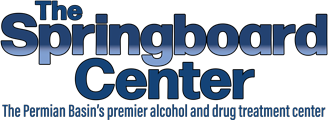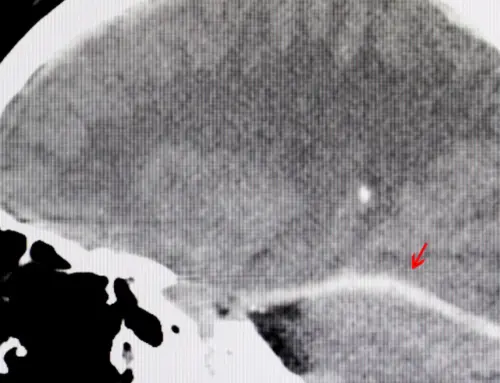Imagine standing at a crossroads, map in hand. One path leads to a sanctuary where you can focus entirely on healing; the other allows you to navigate recovery while maintaining your daily life. Both lead to the same destination — but which is right for you?
Recovery is as personal as it gets. No two journeys are ever the same.
Choosing the right treatment can feel like a big decision, but it’s also an empowering step toward healing. When considering inpatient vs outpatient rehab, ask yourself: “What kind of support will help me the most right now?”
Residential treatment provides the structure and focus some people need, while outpatient care offers flexibility to stay connected to life at home or work. Your personal story, support system, and unique needs all matter here. The best part is that both approaches can lead to effective recovery. The key is finding the one that fits you and helps you build a lasting foundation for change.
Let’s talk about the benefits of both recovery paths and how The Springboard Center can design a personalized treatment plan that best suits your own unique needs.
Understanding Treatment Levels of Care

The treatment success rates depend on how effective the approach is, taking into account the severity of addiction, personal circumstances, and specific recovery needs. Just as every individual’s struggle varies, so do the levels of care designed to support one’s healing process.
Understanding the differences between Partial Hospitalization Programs (PHP) and Intensive Outpatient Programs (IOP) can help you identify the most appropriate treatment level. When exploring PHP vs IOP, it’s clear that both approaches offer critical support, although they differ in intensity and structure.
- PHP provides a more intensive level of care, often requiring individuals to attend treatment for several hours a day, five to seven days a week.
- IOP offers greater flexibility with fewer weekly sessions, making it more manageable for those balancing work, school, or family commitments.
Both options provide more structure and support than a traditional outpatient program, which typically involves minimal weekly therapy sessions, yet are less intensive than an inpatient program that offers 24/7 care in a controlled, residential setting for those with severe needs or unstable environments.
Your choice between inpatient vs outpatient rehab depends on multiple personal factors and treatment needs. Some individuals might require intensive, immersive treatment, while others can successfully navigate recovery with more flexible outpatient programs.
Related: Do Interventions Work? The Truth About Professional Addiction Intervention
Key Differences Between Inpatient and Outpatient Programs
Exploring inpatient vs outpatient rehab options reveals unique approaches to addiction recovery, with both differing significantly in structure, intensity, and approach.
To put it simply, inpatient rehabilitation provides a thorough, more immersive environment where individuals live at the treatment facility, receiving 24/7 care and support. Outpatient programs, on the other hand, allow individuals to maintain their daily responsibilities while still receiving structured treatment.
Time Commitment and Structure
The time investment varies dramatically between these approaches.
- Inpatient programs typically require a 30-day commitment, providing an intense, structured environment that removes external distractions.
- Outpatient programs offer more flexibility, with treatment sessions scheduled around work, family, and personal commitments.
For some, the intense structure of inpatient care provides the necessary framework to break addictive patterns. Others might find that a less rigid approach allows for more organic personal growth and skill development. This is why a personalized treatment plan must be designed to consider each individual’s needs.
Living Arrangements
Living arrangements play a big role in the recovery process.
- Inpatient treatment offers a controlled, trigger-free environment, removing individuals from potentially harmful external influences.
- Outpatient programs allow individuals to remain in their home environment, practicing recovery skills in real-world contexts.
Each approach has distinct advantages. Residential treatment programs provide a complete separation from potential triggers, while home-based treatment allows for the immediate application of learned coping strategies.
Cost Considerations
A comprehensive rehab cost comparison reveals that treatment expenses vary widely between different program types.
- Inpatient programs typically cost more due to comprehensive care and residential accommodations.
- Outpatient treatment offers a more cost-effective alternative, with many insurance plans providing substantial coverage.
Many insurance plans now offer substantial insurance coverage for rehab, making treatment more accessible. Some outpatient programs may even provide financial assistance or sliding scale fees. While it’s true that financial aspects are undeniably important, they shouldn’t be the sole determining factor in your choice of treatment.
Related: Can a Job Fire You for Going to Rehab?
Benefits of Inpatient Rehabilitation

Each inpatient vs outpatient rehab program offers distinct advantages for individuals seeking healing.
The Springboard Center’s residential program provides a structured 30-day immersive approach to recovery, addressing addiction’s psychological and physical aspects. With counseling, education, relapse prevention, and activities promoting healthy lifestyles, patients can experience several benefits that make their treatment worthwhile.
24/7 Medical Supervision
Perhaps the best advantage of inpatient treatment is the access to constant medical support.
Professionals regularly monitor the patients’ physical and psychological health, providing immediate intervention during challenging withdrawal periods. This 24/7 care ensures patient safety and offers solid and stable support throughout the initial recovery stages.
Removal from Triggers
A controlled environment protects early recovery efforts. By removing external triggers — people, places, and situations associated with substance use — patients can focus entirely on their healing. This isolation creates a safe space for introspection, skill development, and personal growth. Such separation can also assist in developing new, healthier relationships that support the recovery journey.
Intensive Therapy Options
Inpatient programs offer different approaches to therapy, like individual counseling, group therapy, cognitive-behavioral techniques, and holistic treatments that work in concert to address addiction’s root causes. This multifaceted approach contributes to the total healing of mind, body, and spirit.
At The Springboard Center, we’ve seen how addiction ripples through the family structure, impacting everyone connected to the individual. That’s why we invite family members to join our family program to help families better understand the challenges posed by alcohol and drug addiction and provide healthy, compassionate ways to resolve these issues together.
Related: Cured vs Recovered: Why Language Matters in Recovery
Advantages of Outpatient Treatment
When weighing inpatient vs outpatient rehab, reflect on your personal circumstances and recovery goals.
The Springboard Center’s ten-week intensive outpatient program combines structured support with a safe and secure environment, giving you the tools to address challenges, develop life skills, and take ownership of your growth — even in the face of work, school, and life’s demands. Enjoy the benefits of our 10-week IOP – start your pre-admissions application today.
Maintaining Work and Family Life
One of outpatient treatment’s greatest benefits is letting the patients continue their daily responsibilities.
Treatment sessions are strategically scheduled, allowing individuals to maintain employment, support family commitments, and continue personal development. This flexibility creates a sense of normalcy, which can be crucial for individuals striving to balance recovery with life responsibilities.
Cost-Effective Care
Outpatient treatment offers a financially accessible path to recovery.
The lower costs, combined with high-quality care, ensure that individuals from diverse economic backgrounds can access the support they need. Many programs also offer flexible payment plans or financing options to reduce financial barriers and make treatment more attainable.
Real-World Recovery Practice
IOPs give you the chance to work on recovery without stepping away from your daily life.
You’ll get to practice the tools you’ve learned in real-world situations, keep up with responsibilities like work or family, and build positive routines — all with the support of professionals guiding you along the way. It’s a practical way to transition toward long-term recovery.
Making the Right Choice for Your Recovery: Contact Springboard Center Today
Ultimately, the right inpatient vs outpatient rehab choice is the one that best supports your healing process.
Recovery is a journey of hope, courage, and transformation. At Springboard Center, we’re committed to supporting your unique path toward bringing back your best self.
Your recovery matters. Your story matters. Whether you choose inpatient or outpatient treatment, the most important step is the one you take today – contact us.




